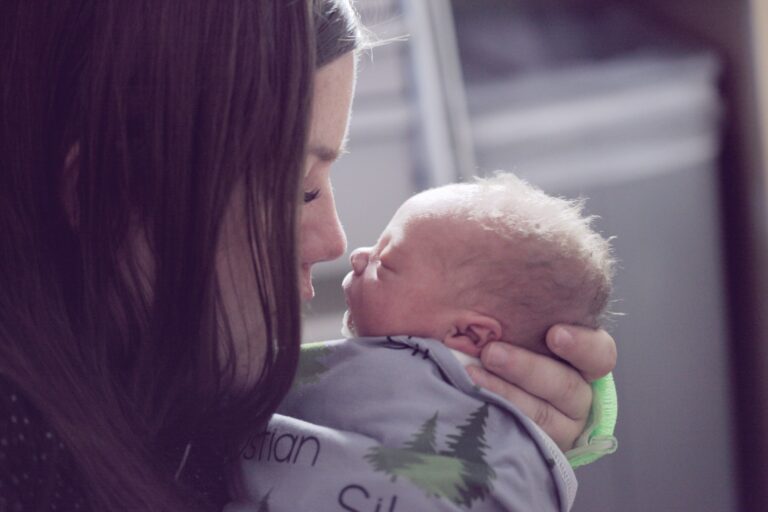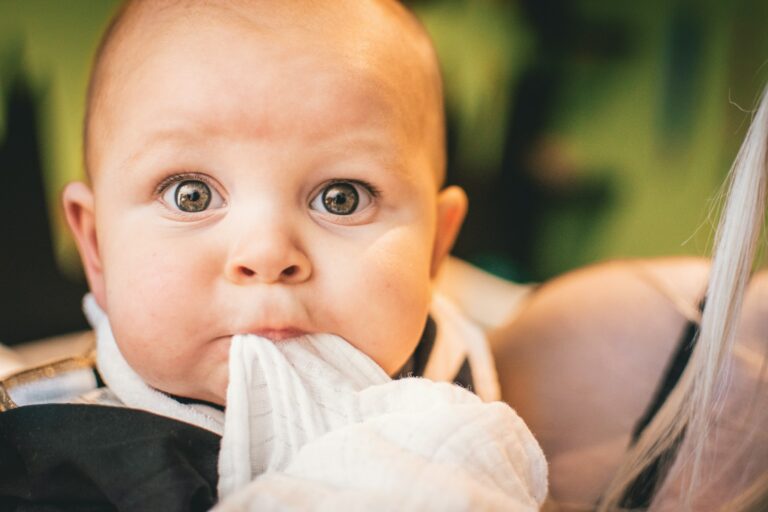A 5 month old baby—a phrase that brings both awe and a thousand questions. At this age, every day can feel like a whirlwind of discovery for your child and, sometimes, a gauntlet of uncertainty for you. Concerns range from sleep (are those early hours normal?), to the mysteries of starting solids, to the quiet comparisons when you hear stories of other babies rolling, babbling, or reaching milestones. How does your 5 month old baby fit into this ever-expanding universe of developmental possibilities? What if you notice something different? From the unpredictability of night wakings to the first hints of stranger anxiety, each moment asks for response, patience, and sometimes fresh understanding. This comprehensive guide addresses the core realities: physical growth, feeding, sleep, emotional shifts, and the spectrum of everyday joys and hurdles at this fascinating age—offering proven solutions, balanced medical insights, and reassurance for every parent’s journey.
What to Expect from a 5 Month Old Baby: Growth and Shifts
The surge in development over these weeks is hard to miss. Muscles firm up, curiosity skyrockets, and you’ll likely witness bursts of coordination—an outstretched hand seeking a toy, a determined roll from tummy to back (and perhaps back again). Not all 5 month old babies tick the same boxes at the same time. Some seem laser-focused on babbling, others explore their toes, and a few might be more contemplative, simply absorbing the world in long, quiet stretches. The secret? Babies at five months are each on a deeply individual timeline. Rather than racing through checklists, empowering your baby to explore at their own pace lays a lasting bedrock for emotional security and lifelong learning.
Physical Development: Muscle Power, Head Control, and Milestones
A sweeping glance at your 5 month old baby often reveals emerging gross motor skills—the big moves involving arms, legs, trunk, or the head. Time spent on the tummy here becomes a showcase: your baby might lift their chest, elbows tucked beneath, executing what pediatricians affectionately call “baby push-ups.” This is far from play; it is the result of rapidly strengthening muscles and integrating sensory input, both prerequisites for future sitting and crawling.
Many parents watch for the much-discussed roll over milestone, typically from belly to back first (less gravity to fight), though the opposite direction can come soon after. Still waiting for this gymnastic feat? No need to worry—variation abounds, and many perfectly healthy babies roll later. Meanwhile, some can already sit with support (your steady, attentive hands just at the hips), displaying impressive core stability for their age. Sensory-motor advances harmonize here too: when you hold your baby upright and they bounce excitedly against your lap, you’re witnessing foundational muscle building in action.
Fine Motor Skills: From Reflexes to Intent
Notice those dexterous little hands evolving by the week? At five months, babies typically transition from accidental grasps to purposeful reaching. Rattles, teethers, or soft rings—many 5 month old babies grab, shake, and study with focused intent. The palm’s grip, once a simple reflex, now unfurls into coordinated grasping, and you may spot your child transferring an object from one hand to the other. This leap in hand-eye coordination—an interplay between vision and muscle control—sets the stage not just for play, but for future self-feeding and writing.
Objects with varied textures invite tactile exploration. A crinkly cloth or a cool teething ring introduces new sensations, stimulating neural pathways linked to sensory processing. It’s not just fun; it’s neurodevelopment in motion.
Cognitive Unfolding: Social Cue Recognition and Cause-Effect Play
The mental landscape of your 5 month old baby is expanding faster than it may seem. Around this age, your baby might turn towards the sound of their name, fixate on familiar faces, and break into wide grins or laughter at playful expressions. This is not only charming—it demonstrates the beginnings of face recognition and a nascent understanding of social dynamics.
What about toys that rattle or music that starts when a button is pushed? Here, the fascinating principle of cause and effect makes its tentative debut. Games like peekaboo are more than amusements; they hint at early comprehension of object permanence—the reassuring knowledge that people or objects continue to exist, even when out of sight.
Communication and Language: Babbling, Cooing, and First Conversations
Speech may seem distant, but make no mistake: language development is in high gear. Your 5 month old baby frequently experiments with coos, squeals, and single syllables—occasional bursts of “ba,” “da,” or “ma” echo the neural groundwork underpinning future words. When you respond—by mirroring their sounds, maintaining eye contact, or naming real-world objects—you underpin critical pathways for receptive and expressive language.
The dance of back-and-forth communication is underway. Even when your baby’s vocalizations are undecipherable, frequent, attentive “conversations” prep their brain for language, social connection, and later reading skills. Don’t hesitate to narrate daily life in descriptive, engaging words—connect what they see, touch, and feel to your speech.
Emotional and Social Growth: Joy, Attachment, and Shifting Bonds
The fifth month ushers in a profound intensification of emotional life. Many 5 month old babies develop clear attachment behaviors—grinning widely at familiar faces, snuggling in for comfort, or displaying the first hints of stranger anxiety (the wariness when faced with new people or environments). These reactions, far from concerning, indicate a healthy progression of emotional regulation and the foundation of trust.
Giggles, smiles, contented coos—they’re small signals of complex internal experiences. Emotional exchanges such as laughter at silly faces or fascination with mirrors may seem playful, but they prime the neural networks responsible for empathy, bonding, and long-term emotional intelligence.
Everyday Care Essentials: Skin, Diapers, and Safe Spaces
Underneath developmental breakthroughs lurk very real, daily tasks. Diaper changes remain frequent—typically every 2–3 hours for a 5 month old baby—reducing the risk of diaper dermatitis (rash). Opt for gentle, unscented wipes, or plain warm water. Periods without a diaper (diaper-free time) can let delicate skin breathe, while using a barrier cream (like zinc oxide) shields against irritation.
Bathing—two to three times weekly with a mild, low-allergen soap at about 98–100°F—keeps skin supple. Always keep one hand on your baby during a bath, as slippage can happen in seconds at this lively stage.
As babies stretch, roll, and grab, babyproofing takes center stage. Cords, loose objects, outlets, and corners present newfound hazards—secure them well. For optimal safe sleep, always place your 5 month old baby on their back, on a firm mattress, free of blankets, loose bedding, or stuffed animals. Swaddling should be discontinued if your baby can roll—a suffocation risk otherwise.
Sleep Realities: Rhythms, Regressions, and the Nighttime Puzzle
How much sleep does a 5 month old baby need? Science points us to a window: anywhere from 12–16 hours per 24-hour period, typically composed of about 10 hours overnight and 2–3 naps during the day. Consistency shines here—try to maintain regular nap and bedtime routines, which anchor your child’s internal clock and help regulate circadian rhythms.
Night wakings, although sometimes disheartening, are common. Whether spurred by teething, developmental leaps, or hunger, these disruptions are part of the maturation process of sleep cycles. Establishing predictable sleep cues—a darkened room, quiet lullabies, gentle rocking—helps both you and your baby settle into nighttime patterns. Parents often ask: Should you pick up your baby upon each nighttime stir? Research encourages gentle reassurance first, allowing opportunities for your 5 month old baby to develop early self-soothing abilities—but always respond with comfort if distress persists.
Loveys or comfort blankets are not inherently unsafe, but choose carefully: only permit lightweight, breathable options once your child shows reliable head control and can reposition independently.
Feeding and Nutrition: Breast, Bottle, and the Gateway to Solids
Your 5 month old baby might still be thriving on exclusive breastfeeding or formula—average intake is around 25–35 ounces every 24 hours, spaced across 4–6 feeds. Adjustments are normal; some days appetite surges, while others it wanes. Watch for hunger cues (rooting, lip-smacking) and signs of fullness (turning away, relaxed hands). Each baby brings their own rhythm.
Curious about solids? Some babies signal readiness at five months: sitting with support, reaching for food, and showing controlled head movements. The American Academy of Pediatrics and World Health Organization both advise starting when these milestones appear, but always discuss with your pediatrician—timing varies and health conditions (like gastroesophageal reflux) may influence individual recommendations.
For first foods, offer single-ingredient purees—iron-fortified cereal, then vitamin-rich vegetables and fruits. Introduce new items one at a time, every 3–5 days, to flag potential food allergies (rash, swelling, vomiting). Early, safe exposure to allergenic foods (egg, peanut, gluten, fish) in small quantities, as emerging evidence suggests, may reduce future allergy risk. Avoid salt, honey, whole nuts, and choking hazards; always supervise and ensure your 5 month old baby is upright during feeds.
Activities, Play, and Developmental Stimulation
Tummy time remains essential—but how can you keep it interesting? Add mirrors, textured cloths, musical toys. Place enticing objects just out of reach: this motivates stretching, rolling, and early problem-solving. Rattles support auditory development; teething rings relieve gums and double as tools for practicing grip.
What about social and language games? Singing, reciting nursery rhymes, and reading aloud may feel simple, but they stimulate both speech centers and the auditory cortex. Peekaboo and pat-a-cake reinforce both object permanence and social interaction, fostering curiosity and connection. For visual engagement, choose high-contrast books or mobiles, inviting your 5 month old baby to follow movement with their eyes and reach with their hands.
Don’t overlook the outside world: even brief stroller walks—pointing out trees, sunlight patterns, or distant sounds—challenge your child’s senses in ways no indoor toy can replicate. Alternate between energetic play, quiet cuddles, and restful downtime; a varied routine counteracts overstimulation and builds emotional resilience.
Teething, Digestion, and Understanding Common Issues
The onset of teething often sneaks up, announced by drool, gnawing, and red, swollen gums. Relief basics include: massaging the gums gently, offering a cool (not frozen) teething ring, or wiping drool to prevent cheek rashes. Mild irritability, disturbed sleep, and gnawing are expected, but persistent fever or diarrhea demands a pediatrician’s input—teething isn’t a direct cause of high temperature or severe digestive symptoms.
Digestive quirks are frequent at this stage. Spit-up—sometimes called gastroesophageal reflux—usually resolves as digestive maturity increases, especially if your 5 month old baby is steadily gaining weight and seems comfortable. Call your doctor if vomiting is forceful, persistent, or paired with poor growth.
Constipation (dry, hard, difficult stools) may occur during dietary changes. Gentle tummy massage, “bicycle” leg motions, or a pediatrician-recommended adjustment in formula can help. Monitor frequency, but avoid over-worry unless there’s pain, blood, or a drop in wet diapers.
Watch hydration, particularly with diarrhea or illness; fewer than six wet nappies in 24 hours can signal dehydration. For fevers over 100.4°F or persistent lethargy, prompt medical evaluation is best—even common viruses can escalate quickly in young infants.
Preventing Accidents: Home and Travel Safety
With rolling now part of your baby’s skill set, household safety reaches a new level of urgency. Anchor dressers, keep cords out of reach, and install outlet covers. Never leave a 5 month old baby on a sofa, bed, or changing table unattended—not even for a moment.
Toys should be non-chokable, robustly constructed, and tailored for under 6-month use—older children’s toys can unwittingly introduce dangerous small parts. In the crib, drop the mattress height at the first sign of sitting. And on the move? Use a properly installed, rear-facing car seat for every car trip. Take frequent breaks on long journeys—both for feeding and changing.
Parental Well-Being and Support
The truth: caring for a 5 month old baby can be endlessly rewarding, yet physically (and emotionally) depleting. Sleep debt accumulates, your own meals may get cold, and “me-time” is a precious rarity. Remember, supporting your health directly supports your child’s. Nap during the day if possible, aim for balanced meals, and seek connection (with other parents, friends, or professionals) when you need perspective or encouragement. Parent groups, online forums, and playdates aren’t just social—they’re an essential ingredient in maintaining your mental health.
Asking for help reveals wisdom, not weakness. Acknowledge the tough days without judgment. Celebrate growth, in your baby and in yourself.
Key Takeaways
- Every 5 month old baby matures at their own speed; variation is typical.
- Routines in sleep, feeding, and play strengthen your child’s sense of safety.
- Observe but don’t fret over “milestone” timelines—instead, support daily exploration and curiosity.
- React promptly to potential warning signs (persistent fever, lack of interaction, no weight gain—see your pediatrician).
- Resources abound—trusted professionals, robust parent communities, and smart tools. For ongoing health tracking, tailored recommendations, and interactive health questionnaires for children, consider downloading the Heloa app—designed to support every step of your journey with your 5 month old baby.
When the days feel long or uncertain, remember: each new skill, every smile, each challenge overcome—these are the unmistakable signs of thriving development, carefully guided by your attentive care.
Questions Parents Ask
Is it normal for a 5 month old to not roll over yet?
Absolutely, every baby develops at their own rhythm. Some little ones take a bit more time before they manage to roll over—this can happen anytime between 4 and 7 months. If your baby isn’t rolling just yet, but seems interested in movement, enjoys tummy time, and is alert to their environment, rassurez-vous, this is completely normal. Encourage play on the floor where your baby can move freely, but don’t worry if rolling comes a little later.
How much should a 5 month old weigh?
Weight can fluctuate considerably at this age, with many healthy babies weighing anywhere between 6 and 8 kilograms (about 13 to 17 pounds). Growth charts provide helpful reference points, but remember: genetics, feeding type, and individual patterns all play a role. If your baby is feeding well, seems generally content, and is growing steadily, it is essentiel to celebrate their unique progress. For any doubts or significant changes in appetite or growth, your health professional is there to provide support and guidance.
Should my 5 month old be sitting up on their own?
Most babies start sitting with minimal support closer to 6 months. At 5 months, your child may enjoy sitting with your help or surrounded by supportive cushions, but might still tip over easily—totally normal at this stage! Sitting independently is a gradual process, involving head control, trunk strength, and practice. Encourage upright play when possible, but let your baby set the pace. Each attempt—successful or wobbly—helps strengthen those important muscles.

Further reading:









